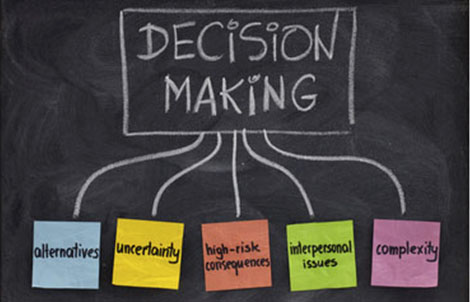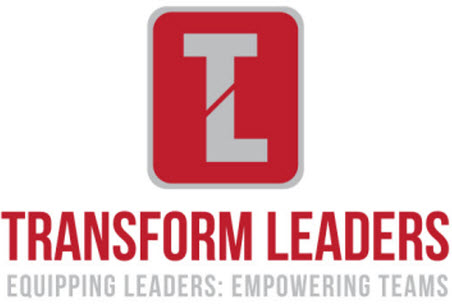Part 2

Sometimes we let ourselves become so distracted by specific goals and resolutions, we lose sight of the reasons we set these targets in the first place. The “why?” is the most important part of the equation. It helps us see where our values stand, and what we really want in life.
Knowing our values is especially helpful for directional decisions. The clearer you are about your life values the easier it is to make most decisions. Values are not going to help you make innovative’ decisions but if you know your values then you can assess if the directional decision will support them. Knowing your values also stops you from cutting corners. The means and ends are connected when you are operating from a clear set of values.
What if, instead of writing out our goals we focused on making a list of our values? Doing so would help to identify where our priorities stand and what achievements are truly important to us. This practice also forces you to be honest with yourself. And real, pure honesty leads to clarity. We suddenly become more aware of what we truly want from our careers, our relationships and the world around us. This helps us gain new perspective, and suddenly the direction we are looking to follow starts to take on a more defined shape.
For me, when I was making the decision about the future of my business partnership I considered that my second highest value is that of contribution. Using my values I asked, “Of the decision that is before me, which direction will enable me to live out my value of contribution?†Asking this question made the decision clearer and gave me courage.
Another value of mine is connection – relationships. This is what clouded this decision because I really enjoyed being connected and in relationship with Kelvin. However, when I reviewed my values again it was instructive because this value is less important to me than contribution. Having and knowing your values hierarchy is critical when making decisions. If I wasn’t clear on which values are most important to me then the feelings I had around losing the connection’ (I knew Kelvin and I would continue to be in relationship/friendship) would have caused me to procrastinate making a decision.
4. KNOW YOUR DECISION-MAKING STYLE
After in-depth work on 1,021 responses to a survey, authors Dan Lovallo and Olivier Sibony identified five decision-making styles. They are: Visionary, Guardian, Motivator, Flexible, and Catalyst.
Each style is a combination of preferences from a set of six pairs of opposing characteristics:
- Prefers ad hoc or process
- Prefers action or caution
- Gathers information narrowly or widely
- Believes corporate interests or personal interests prevail
- Likes continuity or change
- Prefers storytelling or facts
Decision makers all have particular ways they like to work and there are actions each should take to keep their tendencies from undermining their intent. The critical aspect is to know when you need to switch styles or at least mitigate from overdoing one style.
Visionary
The visionary decision maker is a champion of radical change with a natural gift for leading people through turbulent times.” Such people like change, gather information relatively narrowly, and are strongly biased toward action but “may be too quick to rush in the wrong direction.
If you are a visionary leader, you should seek the opinions and views of a broad group and encourage dissenters to voice their concerns. Only that way can you get a wider set of views and information that can be critical to success.
Guardian
A guardian is a model of fairness who preserves the health, balance, and values of the organization. Such people have sound decision-making processes, try for fact-based choices, and plan carefully. They like continuity, are moderately cautious, and gather information relatively widely.
Those are fine characteristics for normal times. But the guardian can be too cautious and slow moving during a crisis, when there is desperate need for adaption or innovation. That is why a guardian should talk to people outside the organization and have them challenge deeply held beliefs about the company and its industry. Task forces are then in order to “explore major changes in the environment.
Motivator
Motivators are good choices for change. They are charismatic, can convince people of the need for action, and build alignment among parts of the company. But like all good storytellers, they risk believing the story in the face of countervailing facts. They gather information relatively narrowly, and strongly believe that self-interest prevails over corporate interest. They often listen to their guts when making decisions rather than facts’.
Rather than looking simply for outside counsel, motivators need to explore the existing facts and see if there are other ways to interpret them–ways that do not necessarily play into the narrative they have created. Formal processes are a help. Motivators can use surveys to get a realistic sense of the rest of the company.
Flexible
Flexible leaders are, as you might expect from the name, more versatile than other types of leaders: comfortable with uncertainty, open minded in adapting to circumstances, and willing to involve a variety of people in the decision making. They mildly lean to ad hoc approaches rather than formal processes and are fairly cautious. They reflect on their experiences when making decisions.
The problem with flexible leaders is that they can become too open-minded. Looking at all the potential issues, solutions, and outcomes can paralyse the decision-making process. They should set deadlines for decisions before the paralytic debate can commence. It can also make sense to create a framework for ordinary repetitive decisions, making them the subject of a set of rules so as not to waste time on reconsidering.
Catalyst
The catalyst is an excellent person to lead the work of groups, whether making decisions or implementing them. They are balanced, being in the middle on four out of the six characteristics, although they slightly prefer action to caution and are slightly biased toward broadly, rather than narrowly, gathering information. The more extreme the necessary decision, the more they can naturally resist inherent biases.
That said, being middle of the road can yield only average results. To avoid that, a catalyst should watch for circumstances that require high-stakes decisions and realize that they may need a different type of decision process, like having a team look at the situation and suggest potential approaches.
It is interesting when you think about your decision making style, it can change depending on the type of decision and circumstances.
There is no right style, it is important however that you know your style so that you can utilise when it will serve you well and be mindful of it’s limitations when the circumstances might require a different style.
The most successful people are able to adapt, change gears, and use different decision making and leadership styles, as necessary.
EXERCISE:
As an exercise take 10 minutes to answer these questions:
- How skilful are you in making decisions?
- What type of decision do you find most difficult?
- What type of style is your default style?
- What process do you follow when making a decision?
I’d love to hear your feedback. Email me at Craig@transformleader.com.au or put a comment in the comments section.
